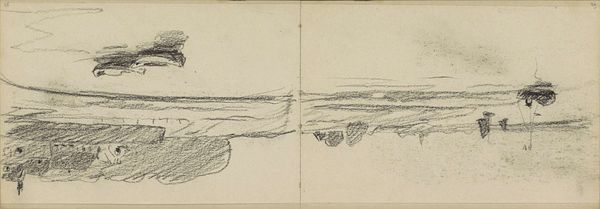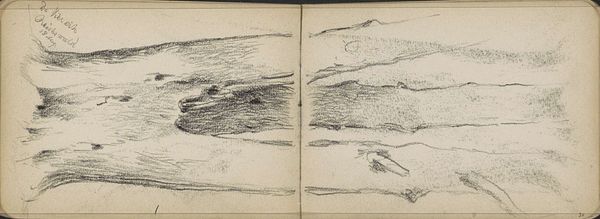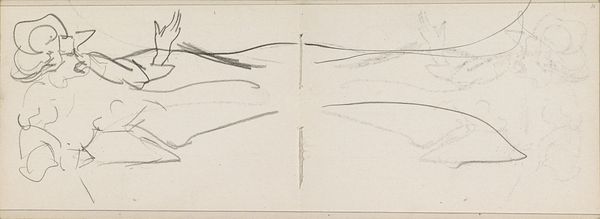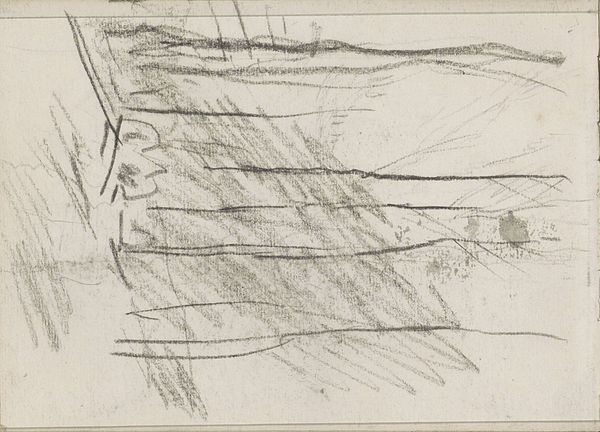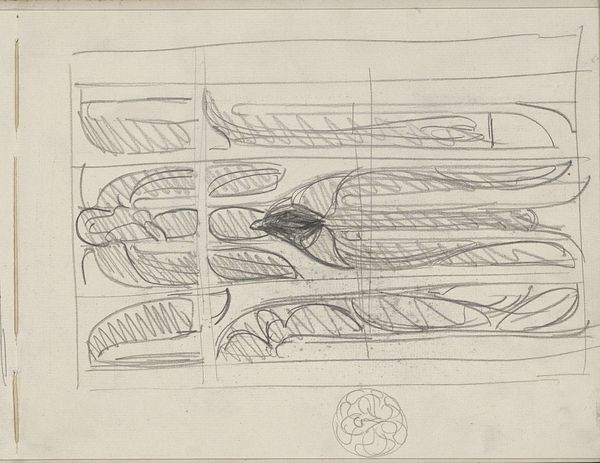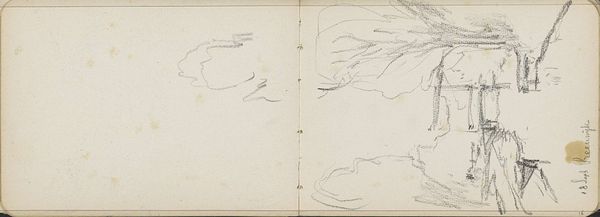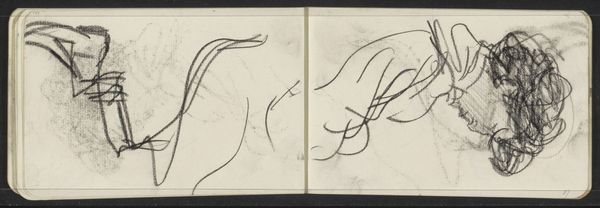
Copyright: Rijks Museum: Open Domain
Curator: Isaac Israels made this graphite drawing, titled "Groep staande vrouwen" – Group of Standing Women – sometime between 1875 and 1934. It’s currently held here at the Rijksmuseum. Editor: It feels almost… frenetic. The lines are so rapidly sketched, conveying movement more than solid form. You can sense the artist trying to capture a fleeting moment. Curator: Absolutely. And it’s essential to understand the context in which Israels was working. This sketch belongs to a larger cultural moment, deeply entrenched in observing and representing women within evolving societal structures. It also mirrors his larger interest in representing work and workers within various professions, and particularly, it demonstrates an interest in representing women in those domains. Editor: Yes, the diagonal shading provides structure but feels repetitive, almost like fabric being worked. Were the women seamstresses or laundresses perhaps? It's difficult to make out any details that provide clarity, instead the impression is almost the subject is work itself. The quick hatching suggesting the repetitive motions that their bodies endure. Curator: That’s a compelling reading, thinking about their potential labour. Israels himself came from a privileged background, and was interested in these emerging class stratifications that came out of urban modernity. The women’s representation, while appearing spontaneous, engages with larger questions of gendered labor and social class, and how these forces shape lived experiences. Editor: Do you think this informs the immediacy of the piece? It seems like a raw document, a quick record, but it still communicates more than mere figures. I'm fascinated by how he has produced depth by changing the direction and density of the lines. How would the final production, if it happened, reflect the spontaneity of this work? Curator: Its rough aesthetic and lack of finishing reveals the preliminary thought process as being more valuable than the end product. This is especially interesting because it comes from an artistic perspective which views the sketchwork as being equally important as the “finalized” representation. The cultural understanding of what qualifies as "art" expanded to embrace raw observational exercises like this one. Editor: So, by focusing on this piece’s materials and method we can understand it within its historical context as challenging what counts as art itself? A fascinating conclusion. Curator: Yes, indeed. This piece shows us the seeds of broader societal and artistic reassessments, reflecting on the gendered labour of the Impressionist moment.
Comments
No comments
Be the first to comment and join the conversation on the ultimate creative platform.

